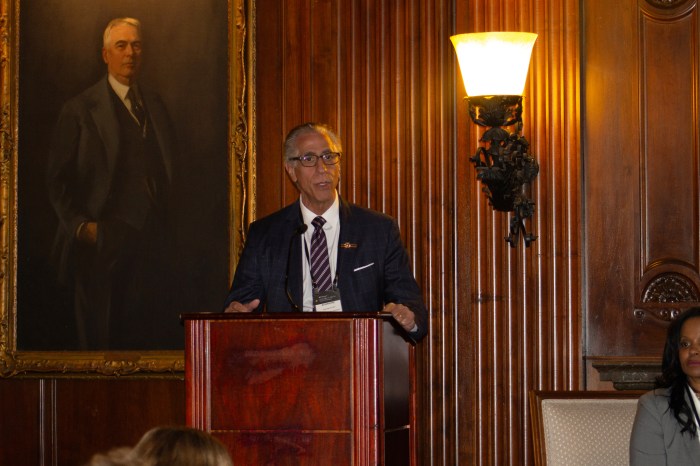James Curran says risk remains high, resources few, 25 years on
A former public health official who was among those who first investigated HIV in the U.S. said that “denial and complacency are still the greatest obstacles to progress” in the battle against AIDS.
In 1981, Curran headed the first task organized by the federal Centers for Disease Control and Prevention (CDC) that investigated what was then an outbreak of a new disease affecting gay men. A CDC report, published on June 5, 1981, about pneumocystis carinii pneumonia in five gay men is seen as marking the start of the epidemic.
“When the first cases of pneumocystis pneumonia were reported to CDC they were reported in gay men,” Curran said. “Shortly thereafter they were reported in injecting drug users… Our leading hypothesis from day one was a virus was the underlying cause.”
The conference call was organized by the CDC. Dr. Kevin Fenton, director of CDC’s National Center for HIV, STD, and TB Prevention, called Curran “one of our nation’s heroes.” Curran led CDC’s HIV prevention efforts for more than a decade.
Curran described the global AIDS epidemic as “something that is continuing to grow… something which seems to know no bounds.”
The “lessons learned” are that “good surveillance continues to be very important” and “innovative science has overcome skeptics,” Curran said. He added that anti-HIV drugs have “revolutionized treatment for people with HIV.”
Prevention is still important.
“The third lesson is that HIV prevention works,” Curran said. “It works if its hands are not tied by local, national, or international political concerns… A lot of times at the political level things get distorted by other agendas.”
Curran said that the epidemic among gay men was a particular concern and he said America should not “underestimate the risk to gay men in the United States for the foreseeable future.”
Last year, the CDC estimated that one million Americans are HIV-positive or have AIDS. Half of the cases are among gay or bisexual men. Between 2000 and 2003, men, both straight and gay, accounted for 74 percent of the new HIV diagnoses. Gay or bisexual men represented 67 percent of the new diagnoses among men in that time.
In 2003, the CDC reported that between 1999 and 2002, new HIV diagnoses among gay and bisexual men increased 17 percent.
In 2005, the agency estimated that new HIV diagnoses among men who have sex with men increased eight percent between 2003 and 2004. New diagnoses among heterosexuals and injecting drug users declined from 2001 to 2004, according to the CDC.
Just as it generally ignored AIDS in the early years of the epidemic, the mainstream press continues to overlook the significance of the virus’ ongoing spread among gay and bisexual men.
“New things are news and old things aren’t news,” Curran said. “The continuing spread of the epidemic particularly among young gay men is not a compelling story and I think that continuing stigmatization is a factor.”
Curran commended the gay community for its role in fighting HIV and AIDS.
“I think that the leadership in the gay community has been strong over the past 25 years,” he said.
AIDS groups continue to struggle with reduced funding. Many private sources have stopped giving and federal funding has also slowed.
In 1995, HIV prevention spending, roughly $656 million, accounted for ten percent of all AIDS dollars in the federal budget. By 2002, that number had dropped to seven percent, or $968 million. Federal HIV prevention spending remained flat at roughly $900 million, or four percent of all AIDS dollars, in 2005 and 2006. The Bush administration has proposed spending $956 million for HIV prevention in the 2007 fiscal year.
Fenton, who is gay, said, “The best way we can honor the 500,000 Americans… who have died from this disease is to stop the spread of this disease.”
The CDC has “several key strategies” to reduce the spread of HIV. These include increasing HIV testing, focusing HIV prevention on “both HIV-positive and HIV-negative people,” and reducing ethnic and racial disparities in access to care.
“We must continue to address to role of substance abuse,” Fenton said. “Substance use is the key reason why people continue to take risks.”
Gay and bisexual and men were “hardest hit early on and remain a particularly vulnerable group today,” Fenton said.
gaycitynews.com



































